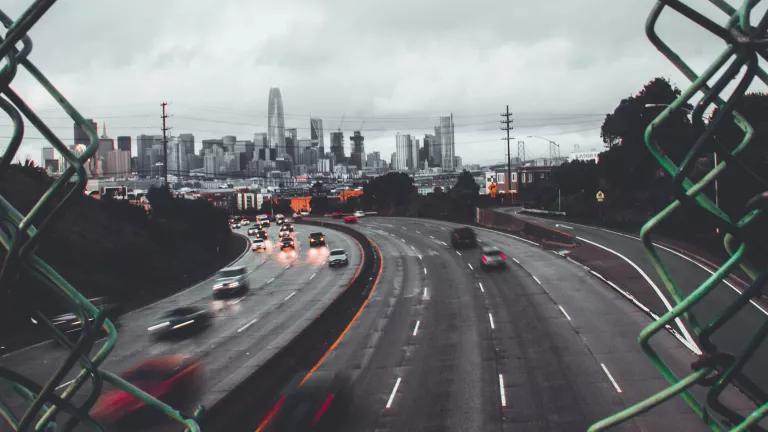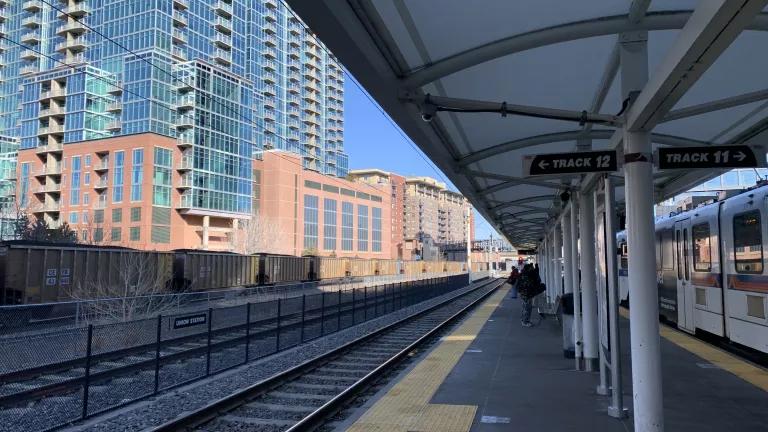Reconnecting Communities: Cities Use New Funding to Repair Transportation Injustices
A new program in the Bipartisan Infrastructure Law helps reconnect communities torn apart by destructive highway and bridge projects.

Aaron Lau/Unsplash
This guest blog was written by NRDC intern Brooklyn Morris.
The Reconnecting Communities program that was announced by the U.S. Department of Transportation is an important step in the process of undoing decades of structural divisions throughout America.
The program is set to receive $1 billion over the course of five years through the Bipartisan Infrastructure Law. The first round of grants, announced on February 28, will provide $185 million to 45 projects around the country.
Throughout its history—from the 1950s until today—the construction of America’s highway system has disproportionately displaced and disconnected communities of color. State transportation departments regularly built highways over what had been homes and businesses. New highways frequently separated neighborhoods and cut communities off from economic opportunities, resulting in these neighborhoods becoming neglected and burdened with poor air quality, along with cratering property values.
While past mistakes continue to fuel some current decision-making, the Reconnecting Communities program emphasizes conscious reflection on history and transformative justice and supports projects that seek to reconnect communities. This is a step in the right direction and many communities will benefit from these projects.
The Akron Innerbelt
The Akron Innerbelt—first conceived in 1960 as part of a 15-mile expressway in Ohio—tore through communities of color, driving racial disparity by tanking property values and displacing residents. It is now one of the projects set to receive $960,000 in grants. The funding is intended to remodel a mile-long stretch, known by locals as the “road to nowhere” since it was never completed, never saw the predicted traffic counts, and failed on its promise of revitalization for Akron and its residents. The Innerbelt is a prime example of a road constructed during the “highway boom,” a time of urban renewal and exploding freeway construction that all too often disconnected communities or even tried to erase them entirely.
For the past two years, the Innerbelt Advisory group has been working tirelessly to plan the remodel in a way that reckons with the highway’s fraught past and to imagine a future that centers the voices of local residents. The group has been engaging directly with residents in an effort to develop a project that will use the Reconnecting Communities funding to best serve the community and help it thrive for years to come. The city also plans to build more housing, help traffic flow in neighboring areas, and incorporate trails and parks in the hopes that this land can be repurposed into a usable space that is an asset to all of Akron.
New Jersey Long Branch station pedestrian tunnel
The New Jersey Transit Corporation received $13,215,036 to build a pedestrian tunnel at Long Branch train station that will allow access from multiple directions.
Since the opening of the station in 1875, it has divided the east and west sides of the city. While the station has one of the highest riderships on the New Jersey Coast Line, there is no access to the station from the western side, due to a retaining wall that acts as a barrier, and it is difficult for people on the east side to access the businesses and medical assistance on the west side. Due to this lack of access, pedestrians have been crossing the railroad tracks, making the area very dangerous for conductors as well as pedestrians.
In an effort to provide residents of Long Branch with safer and more convenient transportation options, this area of Long Branch was named an official Transit Village. The purpose of a Transit Village is to increase transit ridership, which in turn will decrease pollution and traffic congestion. Since this designation, the city has been conducting road repairs and working to make sidewalks and bike lanes accessible. And while the designation was a good start, the Reconnecting Communities program will provide Long Branch with the funding it needs to make larger projects such as the pedestrian tunnel a reality. The tunnel will marry safety, connectivity, and accessibility with community and culture, and it has the potential to unify Long Branch once again.
These are just two examples of the 45 projects that have been awarded funding through the Reconnecting Communities pilot program. The program could truly become one of the most vital pieces of the Bipartisan Infrastructure Law, as it may finally provide the means for historically disadvantaged communities to thrive. It has the ability to uplift communities across America, and we look forward to seeing it expand in future rounds.



